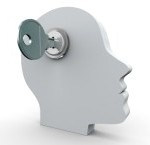 At a time when we are programmed to value the new and the different, it may come as a surprise to learn that the standard, and the common are in actuality the drivers of transformation. Many of us fear and dislike the “McDonalds” of the world, because they are associated with factory-style service. However, many of the innovations that have changed the world, including modern manufacturing, the Internet, and even food collaborations, have succeeded and grown because of standardization.
At a time when we are programmed to value the new and the different, it may come as a surprise to learn that the standard, and the common are in actuality the drivers of transformation. Many of us fear and dislike the “McDonalds” of the world, because they are associated with factory-style service. However, many of the innovations that have changed the world, including modern manufacturing, the Internet, and even food collaborations, have succeeded and grown because of standardization.
Apple Inc. may seem like a strange example to include in a discussion of standards. After all, it is the company that compels us to “Think Different.” But during his tenure as CEO, Steve Jobs instilled a culture inside Apple that had nothing to do with the free-spirited and rebellious self-actualization that it’s TV and billboard ads proposed.
Instead, Jobs set high expectations and goals for himself and the entire organization and swiftly got rid of people who couldn’t or wouldn’t play their part. In fact, Apple employees are known not for their diversity of perspectives but rather for their uniform adherence to and advocacy of the Apple approach when it comes to product design, service and development.
However, from this surprising conformity, was born Apple; a company that achieves an extraordinary level of innovation and productivity that has transformed not one but several different industries, including Media, Education, Advertising, Telecommunications and Electronics. Their recent innovations have resulted in a series of highly innovative consumer products and services that have uplifted the company into the profitability margins, growth and consumer loyalty which has been a first in industries across the board for many years to come, and all in an era of questionable sound economic activity. In the last decade, Apple’s stock prices have risen from around $10 in 1998 to nearly $700 in 2012, its revenues from around $5.5 billion to $8.8 billion; a steady growth rate of 70% per year. It is of course not surprising that roughly 90% of Apple’s reported revenues are derived from device sales. The success of the company’s software and service products are dependent on the way they support device sales as well.
So for those that shy away from, or consciously avoid practicing the same old for the sake of innovation and creativity, it’s good to know, you can ‘t one without the other. To be an innovator, one first has to perfect the skill in question.





